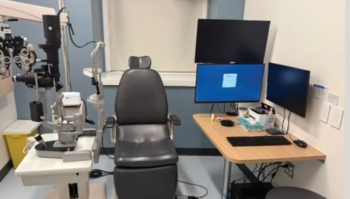
Assessing a novel trabeculectomy technique
Since the late 1960s, trabeculectomy has been the operation of choice for improving aqueous outflow in glaucomatous eyes. Still today it remains the gold standard for glaucoma filtration surgery, with ophthalmologists accumulating a considerable amount of experience with the procedure, its advantages and its limitations.
Though the traditional surgery is effective in achieving an intraocular pressure (lOP) of less than 22 mmHg, it is less successful in achieving IOPs of less than 15 mmHg, which is a safer level to minimize field progression in advanced glaucoma. The traditional technique is also associated with cataract- and bleb-related problems as well as infrequent but potentially serious postoperative complications, such as endophthalmitis, choroidal haemorrhage and hypotonous maculopathy.
Current concepts of success in glaucoma surgery reflect a greater awareness of these complications and the need for tight control of IOP. Even with numerous modifications that have been proposed to the original trabeculectomy, the lack of a reproducible postoperative IOP reduction and the potential complications have led several surgeons to try other techniques, such as non-perforating surgery.
Here, Ingeborg Stalmans and Thierry Zeyen of the University Hospital, Leuven, Belgium, investigate the long-term outcome of a new trabeculectomy technique, developed by Peng Khaw,1 which aims to address certain drawbacks relating to the classic method.
Specifically, the Peng Khaw technique has identified the following complications relating to the standard trabeculectomy:
Long-term outcome
In a retrospective study, published in the January 2006 issue of the British Journal of Ophthalmology,5 Stalmans and colleagues evaluated the safety and outcomes of this novel trabeculectomy technique, by reviewing the files of 56 eyes of the 53 patients who underwent this surgery between February and December 2003. IOP was logged on days one to three, weeks one to four, three months postsurgery and three times per month thereafter. Early postoperative complications were also measured.
Newsletter
Get the essential updates shaping the future of pharma manufacturing and compliance—subscribe today to Pharmaceutical Technology and never miss a breakthrough.















































